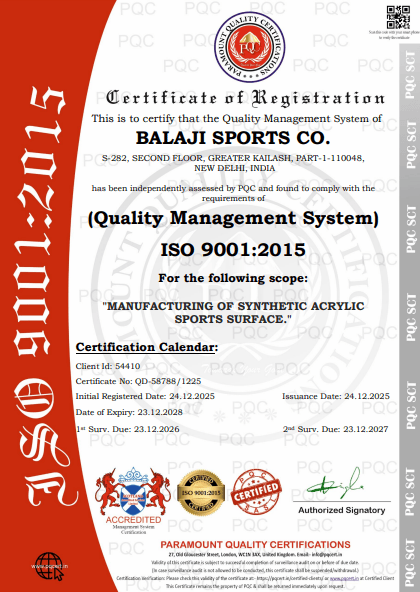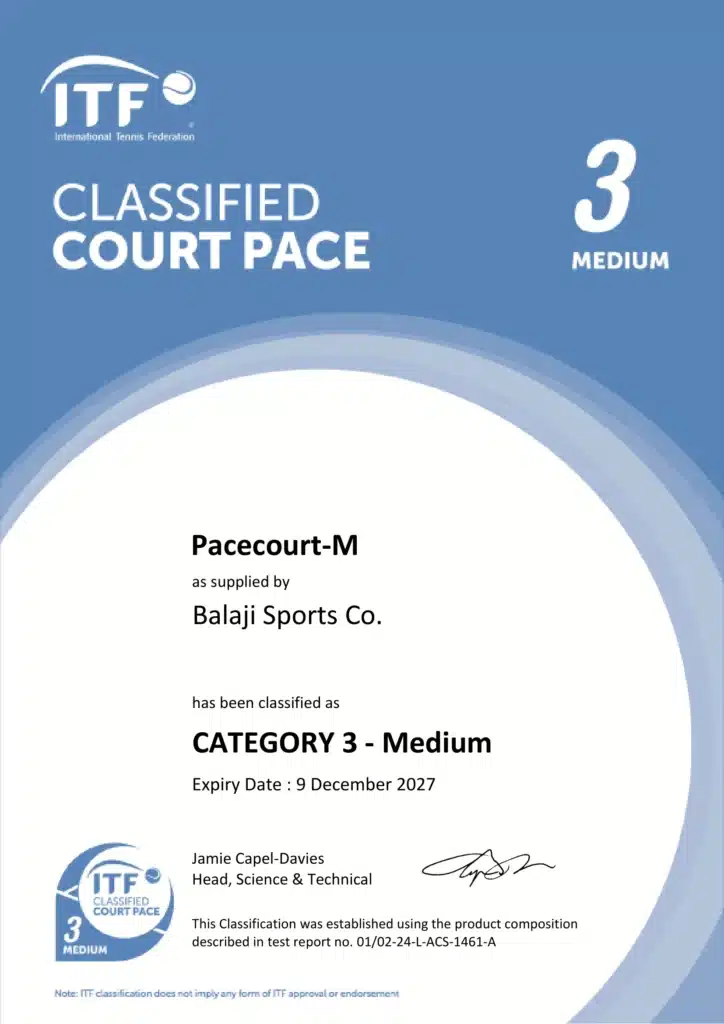Common Mistakes in Sports Court Line Marking and How to Avoid Them
Introduction To be quite honest, writing lines on a sports court may appear simple, but it takes a great deal of accuracy and focus. For example, inaccurate marking can result in player misunderstanding, unfair play, and even unintentional accidents. This comprehensive post will explain some of the most typical errors made while marking sports courts and offer professional guidance on how to prevent them. Whether you’re building a new court or remodeling an existing one, it’s critical to understand these typical mistakes and how to avoid making them. To ensure uniformity in your sports court line markings, use premium materials, take exact measurements, and account for inclement weather while designing the markings. When line marking is done correctly, it improves safety, fair play, and the aesthetics of a sporting venue. Understanding the Importance of Accurate Line Marking For a sports court to continue being both functional and aesthetically pleasing, precise line marking is essential. Marked lines promote fair play, defined boundaries, and a polished appearance. Whether it’s a basketball court flooring, tennis court, or multipurpose space, precise line marking enhances the playing experience and conforms with legal requirements. Key Functions of Line Marking Common Mistakes in Sports Court Line Marking Carelessness in marking lines is common, although it is an essential aspect of a game. Making these errors can affect the way a court works and even put safety at risk. Some of the most common mistakes that you can make are given below along with their prevention strategies. Inconsistent Line Width Problem: Inconsistent line width can confuse players and officials, disrupting the flow of the game. Solution: Always make use of an adjustable line marking machine to get an even width. The machine should be consistently checked at intervals. Incorrect Measurements Problem: Inaccuracy in measuring could cause misplaced lines that can compromise equitable treatment within the game. Solution: When marking, use accurate measuring equipment and confirm measurements twice. Observe the recommended measurements for every sport. Poor Surface Preparation Problem: Failing to prepare the surface properly can cause the paint to peel or fade quickly. Solution: Remove all garbage, dirt, and paint before drawing the lines on the surface. Before painting, make sure that the surface is level and dry. Using Low-Quality Paint Problem: If you use low-quality paint, it will become dull faster and this leads to more painting for regular maintenance which may also result in additional expenses. Solution: Quality acrylic paint should be used for tennis courts. With its toughness, eye-catching tones, and resilience against the elements, acrylic paint is ideal for this purpose. Ignoring Weather Conditions Problem: Variables such as stormy weather, blowing gales, and scorching temperatures could hamper the application and curing of paint. Solution: Before starting this line-marking venture, consult the weather forecast. It is advisable to choose an appropriate day that possesses cool and dry qualities leading to the best outcomes Detailed Guide to Sports Court Line Marking To avoid these common mistakes, follow this step-by-step guide to sports court line marking. Step 1: Planning and Design First, you should have a plan detailing how the court layout will look. Indicate the essential lines and their precise locations as they need to be in the original. Use the scale drawing that you made earlier as a point of reference for this. Step 2: Gathering Materials Grab some newsprint, acrylic paints made from the highest quality organic materials, chalk, measuring tapes, a line marking tool, tape for covering areas that should not be painted over when applying layers of paint, and stencils intended for specific markings. Step 3: Surface Preparation The court surface should be thoroughly cleaned. Get rid of any litter, dust, and paint that’s no longer useful. Make sure that before marking the surface, it’s even and dry. Step 4: Measuring and Marking Employ measuring tapes alongside chalk to outline line positions. Recheck measurements for accuracy purposes. It is necessary to use a line marking machine that gives uniformity when marking the lines. Step 5: Applying the Paint To apply the paint, you should use the line marking machine. Make sure to put masking tape around the borders to achieve neat edges and stop paint bleed. Apply the paint in numerous layers if you want a brilliant hue, as it may require more than one coat in some areas. Step 6: Curing and Inspection The paint needs adequate time to dry completely. Examine the lines more closely to determine if any flaws need to be touched up or fixed. The masking tape must be removed carefully so as not to damage them. Step 7: Final Touches After the house paint has completely dried out, get rid of everything and tidy up the place. Make sure that a final look is taken at it so that the lines blush on with the required specifications. Case Studies Case Study 1: Community Park Basketball Court Project Overview: For the community park, a precise basketball court line markings was required. The previous court’s uneven markings and fractured lines infuriated the players. Procedure: Results: The revised line markings enhanced the playing experience by creating more defined boundaries and a more appealing court. Case Study 2: School Tennis Court Project Overview: The tennis area markings needed to be updated at a secondary school. The previous markings were worn out and erratic, which affected how the game was played. Procedure: Results: The improved court gathered encouraging reviews from players and trainers resulting in better training as well as competitive games. Tips for Maintaining Sports Court Line Markings By maintaining the court, one may make sure that the markings function better and endure longer. Here are some recommendations for appropriate maintenance. Regular Cleaning To ensure a clean court surface, regularly sweep and clean off any litter. This will inhibit dirt development while ensuring line visibility. Prompt Repairs Any rips or tears in the cables should be patched immediately. Constant inspections help you catch bugs early enough for quick remedies and restoration work.. Quality Materials Use high-quality acrylic paint for





